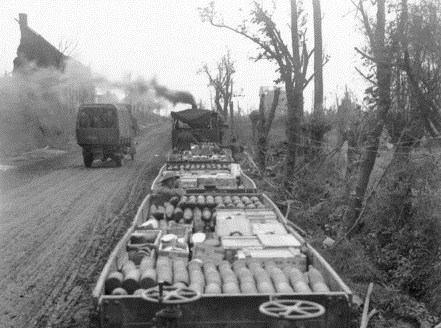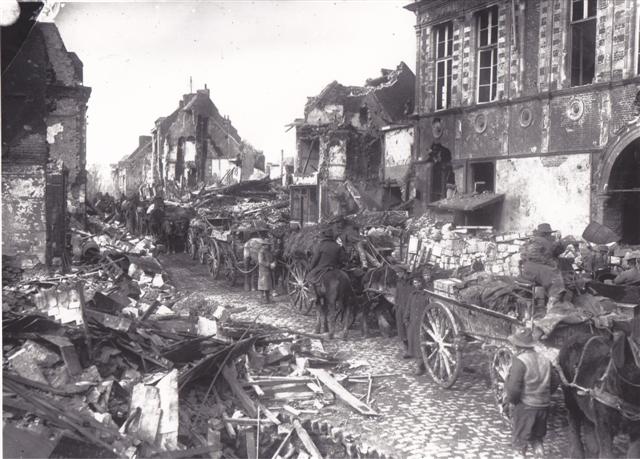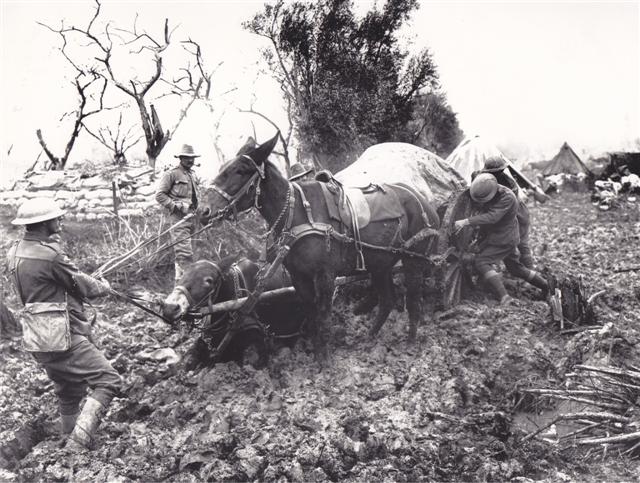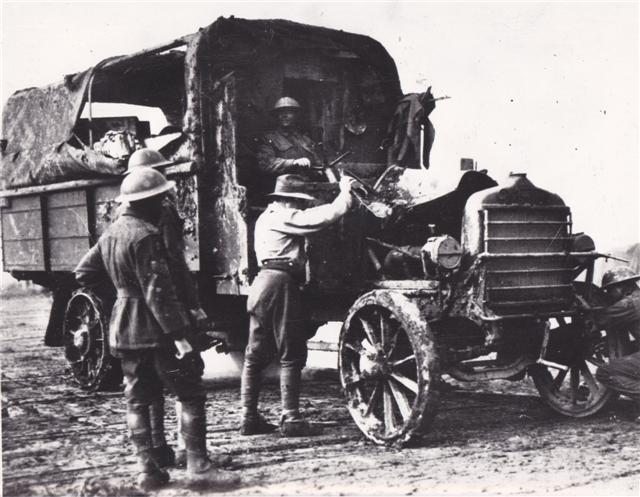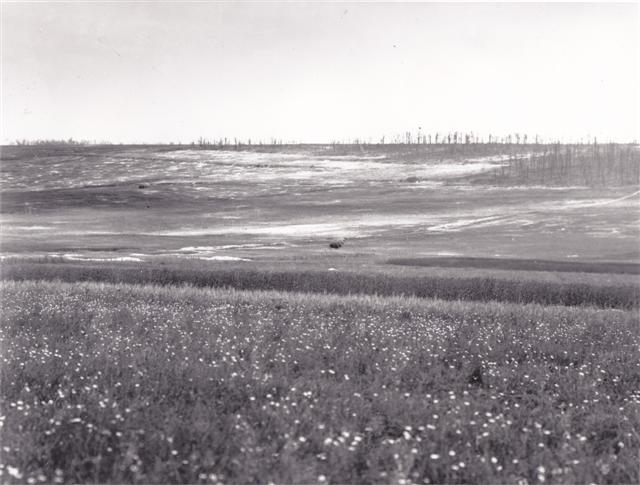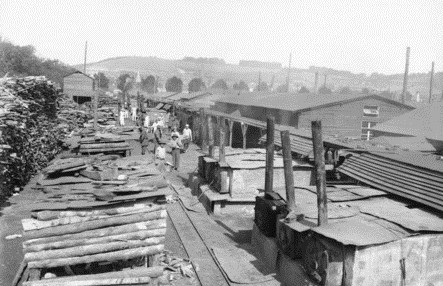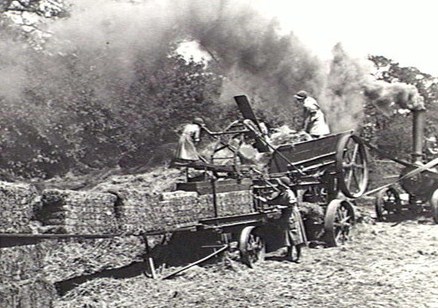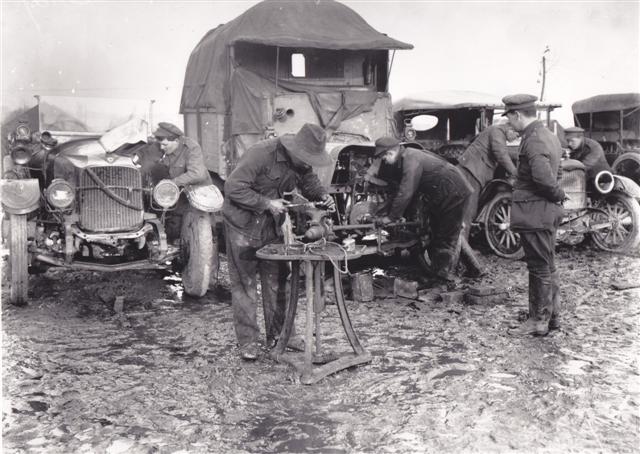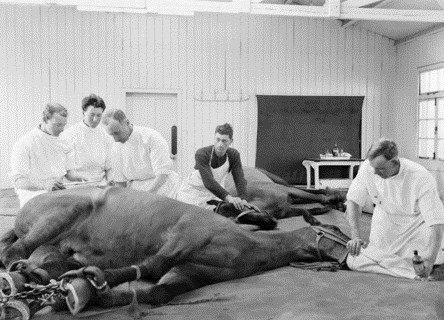Western Front Support Activities
Transport Operations
Transport operating conditions varied from well paved roads to congestion, mud, ice and enemy fire.
Light rail supporting the front
Ypres October 1917
Wherever possible light rail and tramways were used to get supplies as far forward as possible because of their heavy lift capacity. The counter was that the further forward, the greater exposure to enemy interdiction.
Australian War Memorial E00913
Transport held up in the largely destroyed town
Bapaume 1917
Destruction by artillery fire was heavy, and the thoroughfare had to be cleared to let the wagons through.
This or worse was the fate of most towns, whose real residual value was their roads. AASC horsed and motor transport was routinely allotted to assist in clearance and roadbuilding and repair by Engineers and labour details. Train wagons had been employed earlier assisting to begin clearing this passage.
Australian War Memorial E00594
3 Div Train wagon and team stuck in the mud
Ypres October 1917
Germans were not the only enemy on the Western Front. Winter rains meant deepening mud as iron wheels churned deeper. And when the ground froze, motor transport with solid tyres could not cope and was grounded, forcing double duty on both animals and men.
Tending horses and mules and preparing hard standing for them was a major additional task for drivers.
Australian War Memorial No E00962
Australian lorry hit by shell fire
Menin Road Ypres 1917
While the textbook role of the motor transport was generally from railhead to refilling point, the general tasks brought daily details hauling engineer stores and ammunition in forward areas, subject to air attack and regular artillery harrassing fire.
Careful observation of fire pattern and avoidance of hot spots if possible minimised but could not eliminate casualtes.
RACT Museum
Winter inhibiting wagons, often grounding lorries
Somme January 1917
The onset of winter inhibited the use of trucks used between railhead to the wagons at refilling points. In particular, frost totally grounded them, adding that extra leg to the horse transport to cover on top of delivery to units.
With this overload on men and horses, the human and veterinary hospitals saw a heavy increase in patients.
Australian War Memorial E00130
Air drop of ammunition
Hamel July 1918
As part of the planned resupply system, dropping of machine gun ammunition from aircraft was used to ensure that replenishment was not prevented by the anticipated route difficulties and enemy fire. Two parachute loads are about to land in a unique means of delivery which the Australian Army did not reproduce until the Kokoda battle nearly a quarter of a century later.
Australian War Memorial E03840
Food processing
Bread production
Rouen September 1918
The small field bakeries could increase their production exponentially if concentrated and given reasonable facilities. It was worthwhile concentrating them at Rouen and railing the bread forward rather than having them forward and endurung the dislocation of enemy harrassing fire.
Australian War Memorial E03460
Processing Fodder
England 1917
Womens Forage Department workers operating a steam-powered hay baling machine producing forage for the Western Front.
These scenes were replicated in Northern Iteland and Wales in desperate efforts to meet the demands of horse transport.
Australian War Memorial H07583
Maintaining Animals and Equipment
Motor repair park K Corps Tps Sup Col at HQ I Anzac Corps
Hoograaf November 1917.
The range of vehicles is fairly representative, as are working conditions of mud and exposed sites. Field repairs at column workshops kept up availability, while all major repairs were effected in British ASC heavy workshops and the Base Vehicle Depot Rouen.
The unit was merged into No 6 MT Coy in March 1918.
Australian War Memorial 801169
Australian veterinary hospital in operation
Calais 1919
With the large number of draught animals operating in very adverse conditions, the Veterinary Service had a task equal to the Medical Service. Recycling animals back into service was a step less important than for men.
Australian War Memorial E04439
